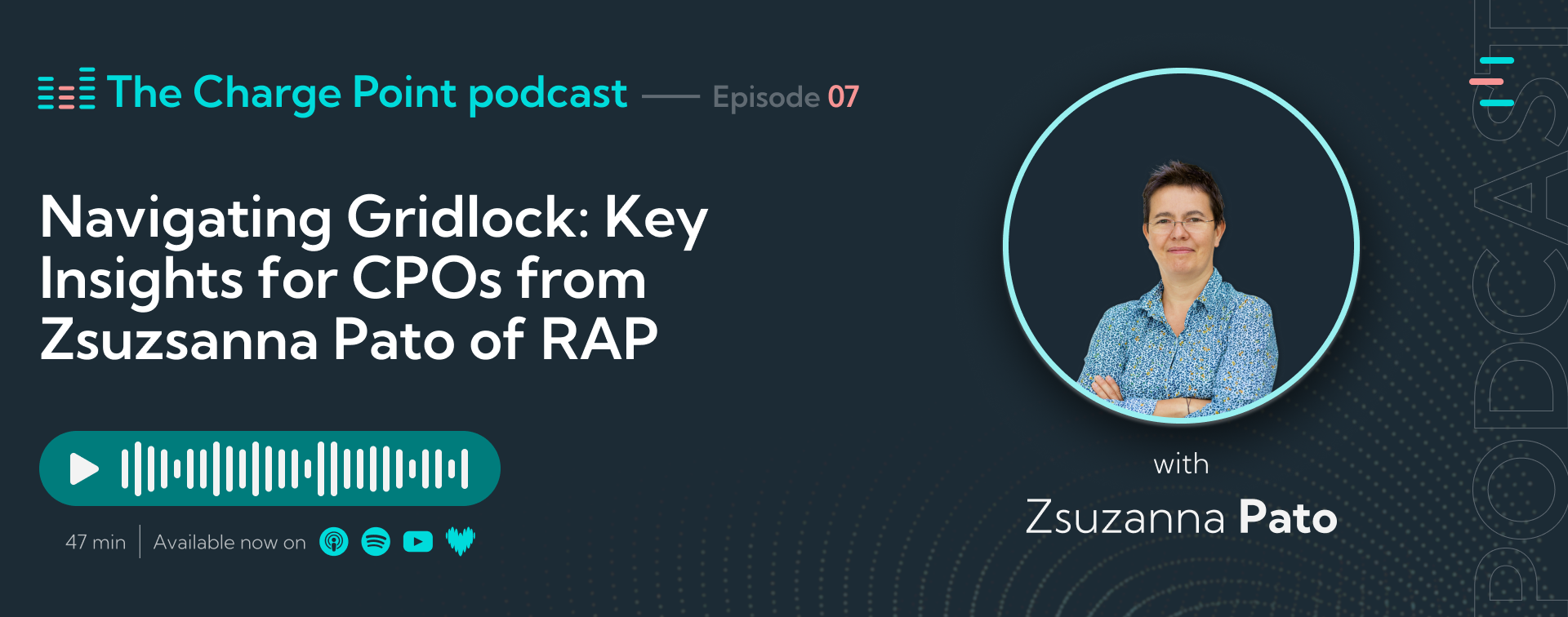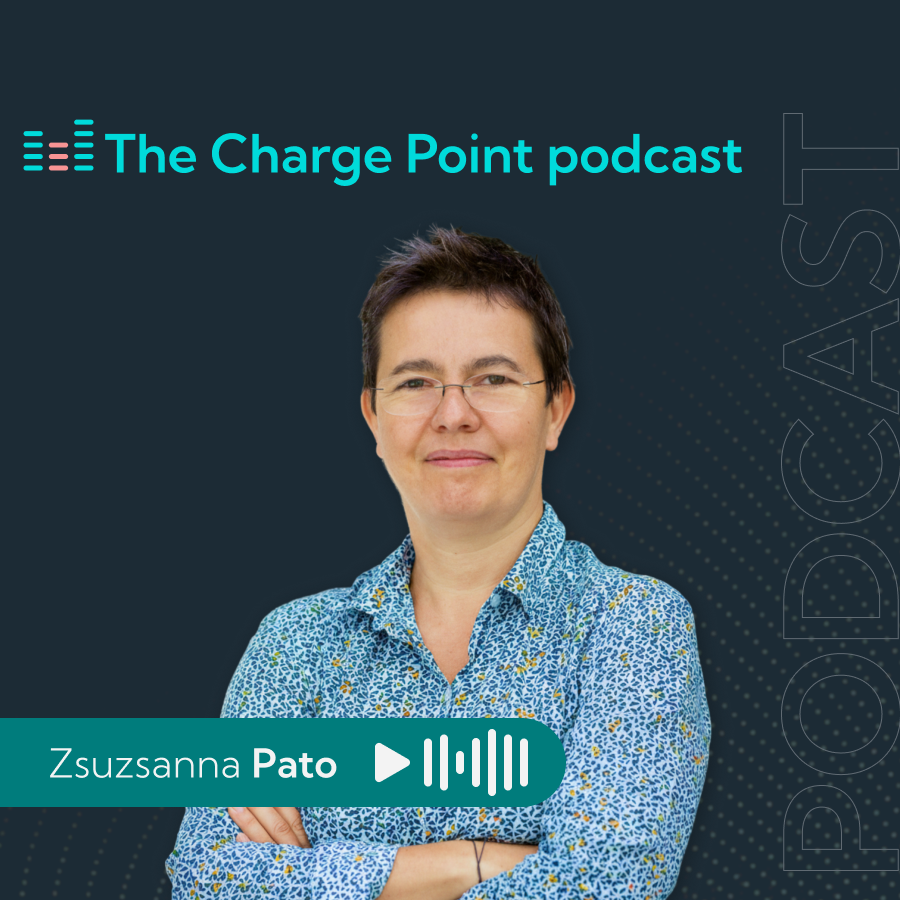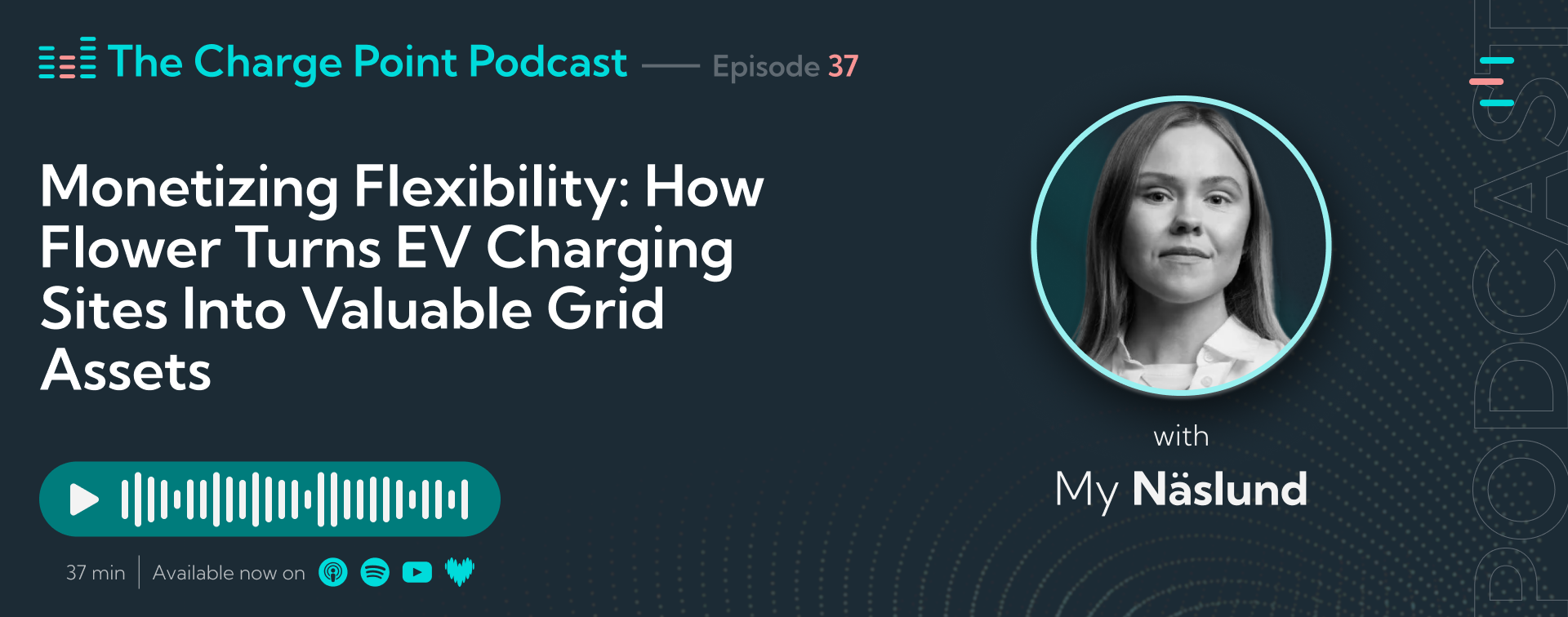Rethinking Grid Access: How Europe’s Energy Bottlenecks Shape the Future of EV Charging

The energy transition meets the charging revolution
In Episode 7 of The Charge Point Podcast, FLEXECHARGE’s Christophe Lephilibert talks with Zsuzsanna Pato, Senior Advisor at the Regulatory Assistance Project (RAP), about one of the biggest bottlenecks in Europe’s energy transition: grid access.
For Charge Point Operators (CPOs), the challenge is particularly pressing. As the energy transition accelerates, electricity demand from EV charging, renewable integration, and heat pumps is creating new forms of grid congestion.
Zsuzsanna explains how outdated “first come, first served” grid connection models are slowing down the energy transition and how CPOs can use distributed energy resources (DERs), battery storage, and smart load management to turn congestion into opportunity.
Key takeaways
1. Gridlock is slowing down the energy transition
Grid congestion has become a critical issue halting new charging sites and delaying expansion plans for months, even years. Zsuzsanna explains that this isn’t just a technical limitation, but a planning and regulatory challenge that requires coordinated action between DSOs, regulators, and CPOs.
2. Grid congestion needs smart allocation, not waiting lists
The traditional “first come, first served” grid connection rule favors early movers rather than efficient projects. Instead, RAP advocates that regulators should introduce dynamic allocation models, allowing connections based on system value, supporting projects that enhance flexibility and grid resilience.
“Grid access shouldn’t be a queue. It should be a strategy.” Zsuzsanna Pato
3. Distributed energy resources can relieve the pressure
CPOs can use on-site batteries, solar PV, and smart load management to reduce peak demand and minimize grid dependence. These distributed assets turn charging hubs into flexible energy nodes, capable of supporting both drivers and the grid.
“Every charging station can be part of the solution, not part of the problem.” Zsuzsanna Pato.
4. Grid-enhancing technologies are an untapped opportunity
Technologies like dynamic line rating, phase balancing, and digital substations can significantly expand existing grid capacity without massive infrastructure investment. Zsuzsanna highlights that these tools are often overlooked but can accelerate the energy transition cost-effectively.
5. Collaboration between stakeholders is essential
From regulators and DSOs to CPOs and energy innovators, cross-sector collaboration will define how fast Europe can scale up EV charging. Shared data, common planning frameworks, and flexible tariffs are key enablers of progress.
Why does this matter?
Zsuzsanna’s message to Charge Point Operators is clear: now is the time to think strategically about where and how you connect to the grid.
If you operate in Europe here are three focus areas that can help you stay ahead:
- Follow national and European grid development maps
Track upcoming capacity expansion projects and transparency maps in your target markets. Engage in the EU-wide grid mapping process to understand where new capacity will be available and ensure your investments align with these zones.
- Explore co-location with renewables and storage
Consider integrating solar PV or battery storage at your charging sites. This not only stabilizes local load but also creates revenue opportunities in flexibility and ancillary service markets, a growing focus in DACH’s evolving energy ecosystem.
- Negotiate non-firm grid connection contracts
Don’t let limited capacity block your rollout. Some DSOs now offer non-firm connections, granting access with limited availability during peak demand. For CPOs with flexible load management, these contracts can be a cost-effective and scalable entry point.
These strategies move CPOs from passive grid users to active energy participants, helping drive the energy transition forward while unlocking competitive advantage in Europe’s most electrified markets.
🎧 Listen & Learn More
Explore how CPOs can navigate grid congestion and regulatory barriers to lead Europe’s EV transition.
👉 Listen to Episode 7 of The Charge Point Podcast

What is Load Management and why is it essential for EV Charging
Explore the essentials of advanced Load Management in this guide. Uncover the complexities of integrating EV charging systems with existing power grids, a critical challenge in energy management. Discover how solid Load & energy management solutions ensure an efficient, secure, and scalable charging infrastructure.


Episode 07- Rethinking Grid Access: How Europe’s Energy Bottlenecks Shape the Future of EV Charging
Discover how Zsuzsanna Pato from RAP explains the grid access challenges impacting EV charging and what CPOs can do to stay ahead.
Lectures intéressantes


How Battery Energy Storage and Virtual Power Plants Are Redefining CPO Profitability


How to Generate New Revenue Streams With Battery Energy Storage Systems (BESS) on EV Charging Sites


November 2025: Megawatt Ambition, Grid Innovation, and Strategic Partnerships Reshape Europe's EV Landscape


Max Brandt on Talking New Energy: How FLEXECHARGE Is Shaping the Future of EV Charging Flexibility

Get started with
FLEXECHARGE
Contact our team to learn more about what we can help you achieve with our open, vendor agnostic platform and powerful solutions.
